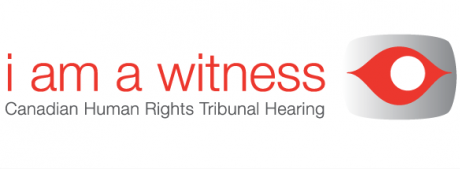Reports
You are here
I am a Witness campaign for Indigenous children

October 24, 2015
Cindy Blackstock of the First Nations Child & Family Caring Society helped to kick off Ryerson University’s Social Justice Week on October 5. She gave the keynote address at an event entitled “Reconciliation: Ready, Set, Go!”
Canadian values?
Blackstock began by pointing out that the most egregious forms of racism in Canada historically have all been “legal”—from the Indian Act, to the Chinese “head tax” onwards. This happened because not enough people resisted loudly against government policies.
She emphasized that rather than focus on “Canadian values,” we should emphasize “human values,” and noted that government racism against Indigenous children (through under-funding of services) “is our Confederate flag, and Parliament has laws that give it life.”
She said that racism is most dangerous when it is combined with righteousness, “as with statements like ‘No more funding for First Nations, because they won’t know what to do with it.’ Or the hypocrisy of this government that passed the First Nations Accountability Act, while not itself accountable for the use of its own funds” (presumably referring to Senate expenditures among other things).
Internal government documents show that the Aboriginal Affairs and Northern Development Canada ministry had to reallocate funds from infrastructure programs (housing, roads, water systems) in order to cover education and social programs. Blackstock asked, “Why not go to the budget surplus for that?”
Allies
Blackstock described the heroism of Dr. Peter Bryce, a public health official and tuberculosis expert who warned the government of the day that “residential schools were hotbeds for the propagation of this disease (tuberculosis)” and that the disease was preventable with as little as $15,000 in spending. He released his famous book in 1922 titled The Story of a National Crime: Being a Record of the Health Conditions of the Indians of Canada from 1904 to 1921, which documented mistreatment of Indigenous peoples in Canada. Bryce was hired by the Indian Affairs Department in Ottawa to report on the health conditions in the Canadian residential school system in western Canada. His report was never released by the government but was published by Bryce in 1922 as a book. And the government, knowing that children were dying from the disease, claimed that the problem was too expensive to fix, launched a smear campaign against Bryce, and made residential schooling mandatory.
Today’s allies of Indigenous peoples can take part in the I am a Witness campaign (www.fnwitness.ca) This campaign supports the complaint made to the Canadian Human Rights Tribunal about inequitable funding for child and family services in First Nation communities. The complaint was made by the Assembly of First Nations and the First Nations Child & Family Caring Society some years ago and a decision is expected this Fall.
Blackstock lauded non-Indigenous children as being the best at reconciliation because they understand what fairness means and will say “This is wrong” when describing what is happening as a result of underfunding for services in First Nations. She said the children were asking, “Where are the adults? Why aren't the adults here? Where are they? Shouldn't they be here?” It indicated that the adults should be taking accountability and responsibility instead of leaving it on the shoulders of the children. Shouldn't adults know better?
She encouraged the audience to make sure to vote on October 19 and “shine a light on the government’s behaviour.”
Section:










